32 Patterns of Art in Marine Life: Examples of Biodiversity
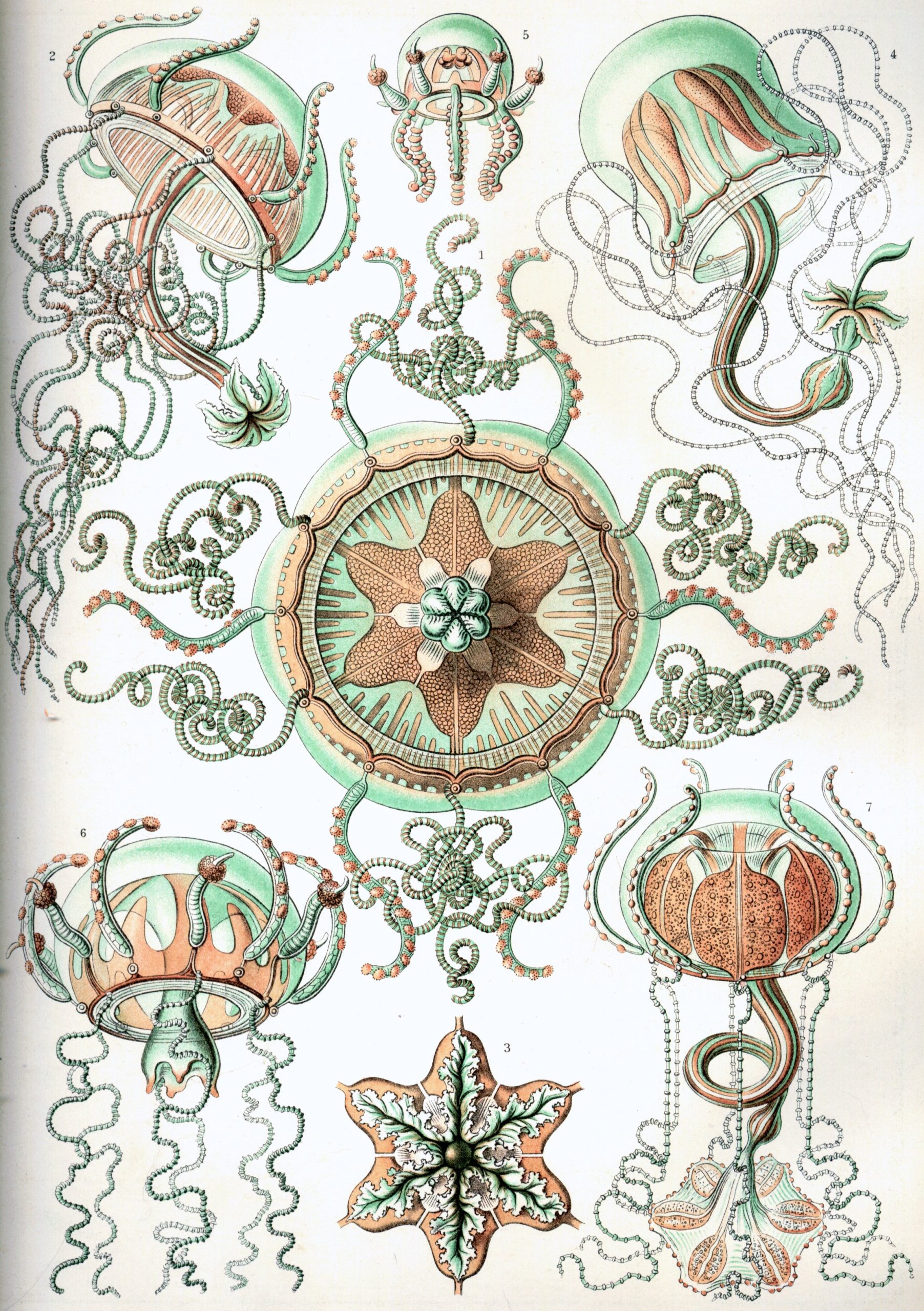
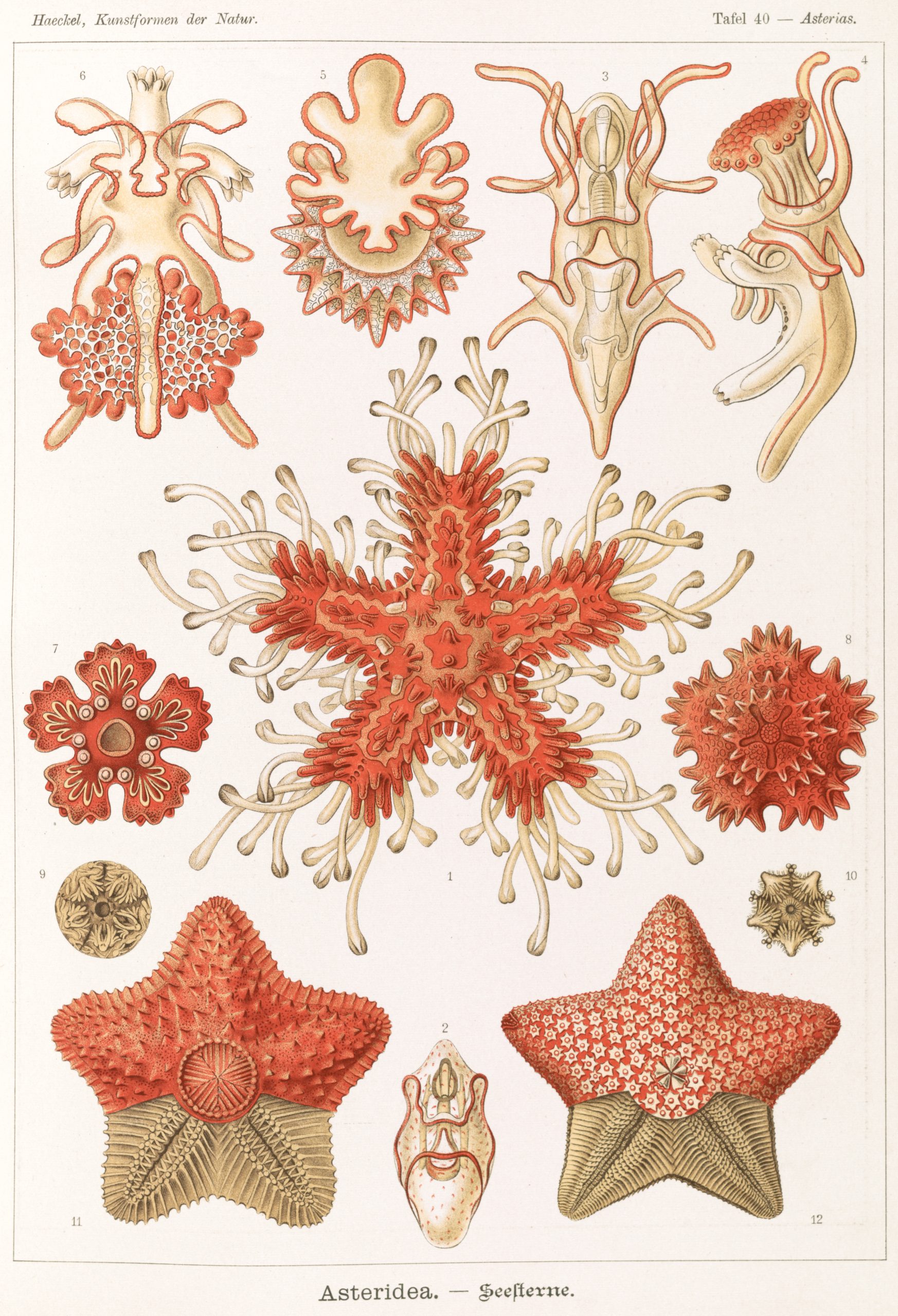
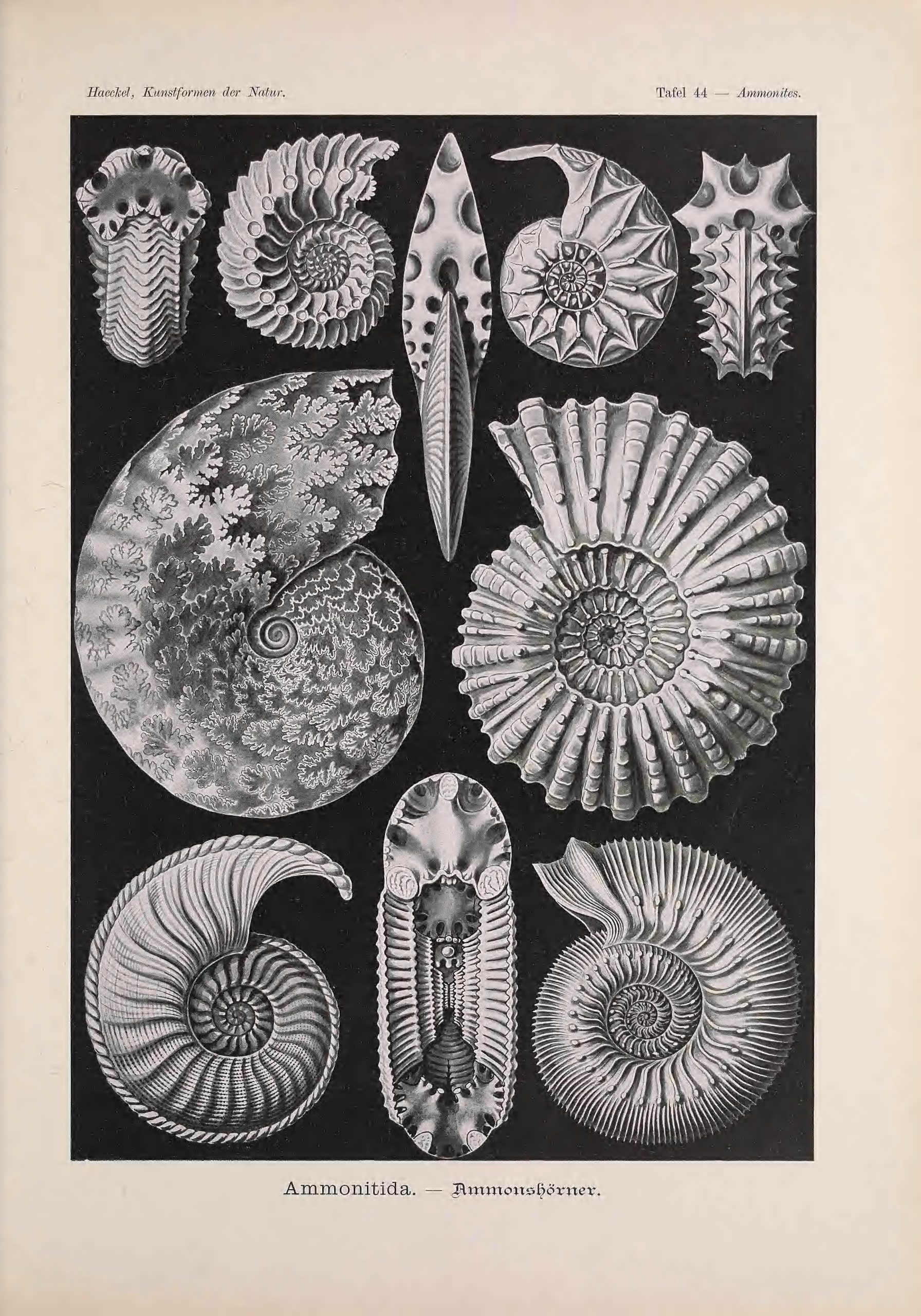
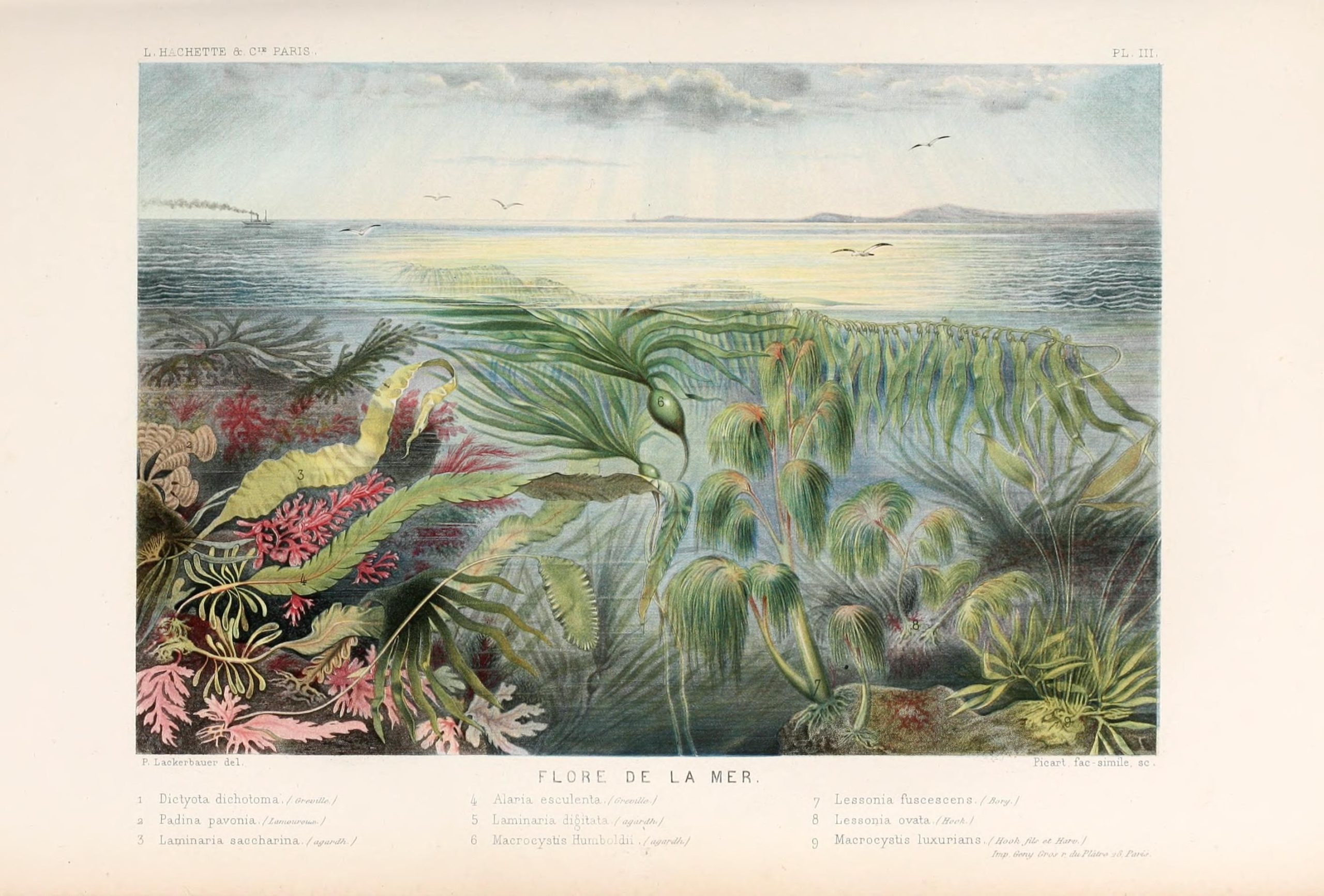
“Light” by Rabindranath Tagore
The butterflies spread their sails on the sea of light.
Lilies and jasmines surge up on the crest of the waves of light.
You can find the collected works of Rabindranath Tagore here.
The Destruction of Coral
David Attenborough (2022) writes about the dramatic changes and environmental destruction that he has observed firsthand during his life time. At 90 years old, he has observed how the “natural world is fading,” which will lead to our destruction unless we “switch off the reactor” and work individually and collectively to build and restore the planet. In this section about marine life, Attenborough draws our attention to the tragic fate of complex life forms of coral reefs:
In 1998, a Blue Planet film crew stumbled upon an even not widely known about at the time—coral reefs were losing their normal, delicate colours and turning white. When you first see this, you may think that it is beautiful—the pure white branches, feathers and fronds look like complex marble statues—but you soon realize that it is in fact tragic. What you are looking at are skeletons—skeletons of dead creatures.
Coral reefs are built by tiny animals called polyps, related to jellyfish. They have simple bodies consisting of little more than a stalk containing a stomach with a ring of tentacles on top surrounding a mouth. The tentacles have stinging cells which stab passing microscopic prey and convey it into the mouth, which then closes while the polyp digests its capture before reopening for its next meal. These coral polps build walls of calcium carbonate to protect their soft bodies from hungry predators. Eventually, they become huge stony structures, each species creating its own architectural form. Growing together, they build up into great reefs. The largest of them all, the Great Barrier Reef off north-eastern Australia, is visible from space. (Attenborourgh, 2022, p. 86).
The underwater cities of coral are inhabited by an array of exquisite marine life. Attenborough (2022) writes:
As you focus, you can see that [the reef] is populated by a cast of the most extraordinary characters—multi-coloured fish, tiny octopuses, sea anemones, lobsters, crabs, and transparent shrimps in all sorts of things that you had no idea ever existed. They are all fantastically beautiful and all, except those right beside you, completely unconcerned by your presence. You float above them, transfixed … (p. 86)
Sea Squirts
There are over 2,300 species of sea squirts. Further, Britannica notes that:
The sea squirt, also called ascidian, any member of the invertebrate class Ascidiacea (subphylum Urochordata, also called Tunicata), marine animals with some primitive vertebrate features. Sea squirts are primarily sessile (permanently fixed to a surface), potato-shaped organisms found in all seas, from the intertidal zone to the greatest depths. They commonly reside on pier pilings, ships’ hulls, rocks, large seashells, and the backs of large crabs. Some species live individually; others live in groups or colonies.
The body has an outer protective covering, the tunic, which contains a cellulose-like substance. Sea squirts have two large pores, one to guide water into the body cavity (the oral, or branchial, aperture), the other serving as an exit (the atrial, or cloacal, aperture). Water is propelled through the animal by pharyngeal cilia. Food and oxygen are taken from the water current as water passes through gill slits in the pharynx. Near the shore, debris from dead plants and animals constitutes an important part of the diet; in deeper water, plankton (microscopic plants and animals) is a more important food.
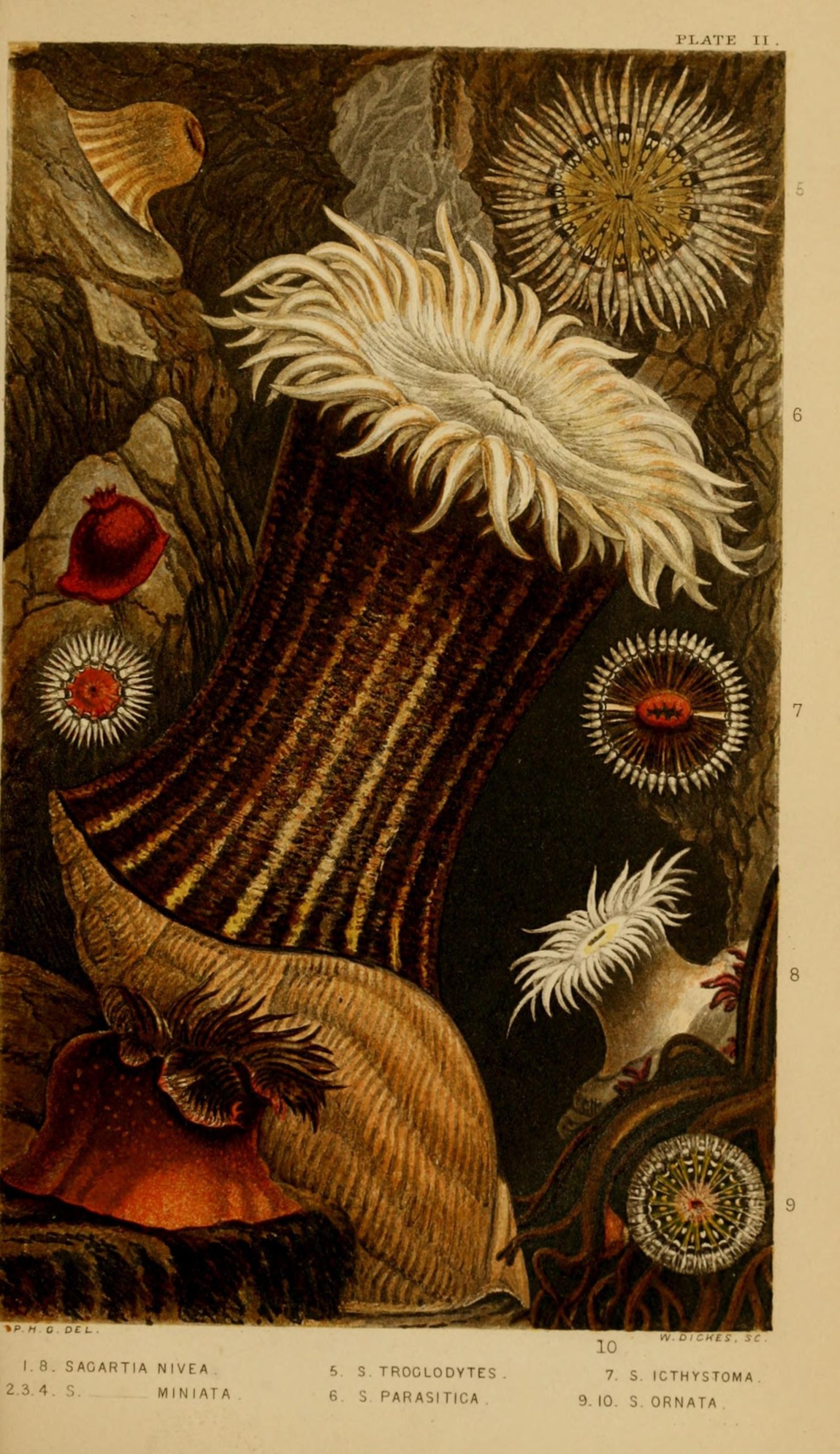
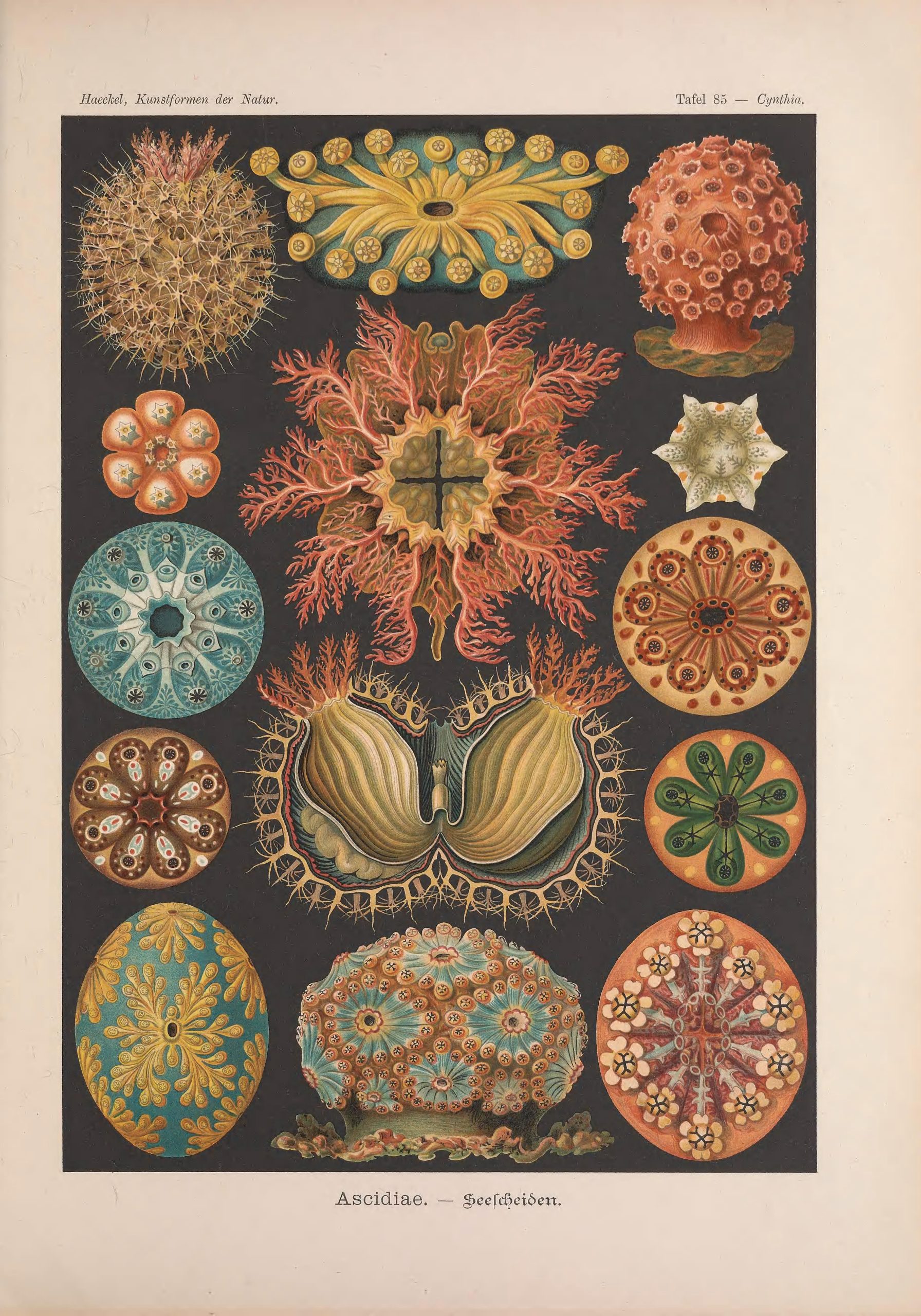
https://www.biodiversitylibrary.org/pageimage/47388417, Public Domain, https://commons.wikimedia.org/w/index.php?curid=44449593
Illustrations of Coral From The Great Barrier
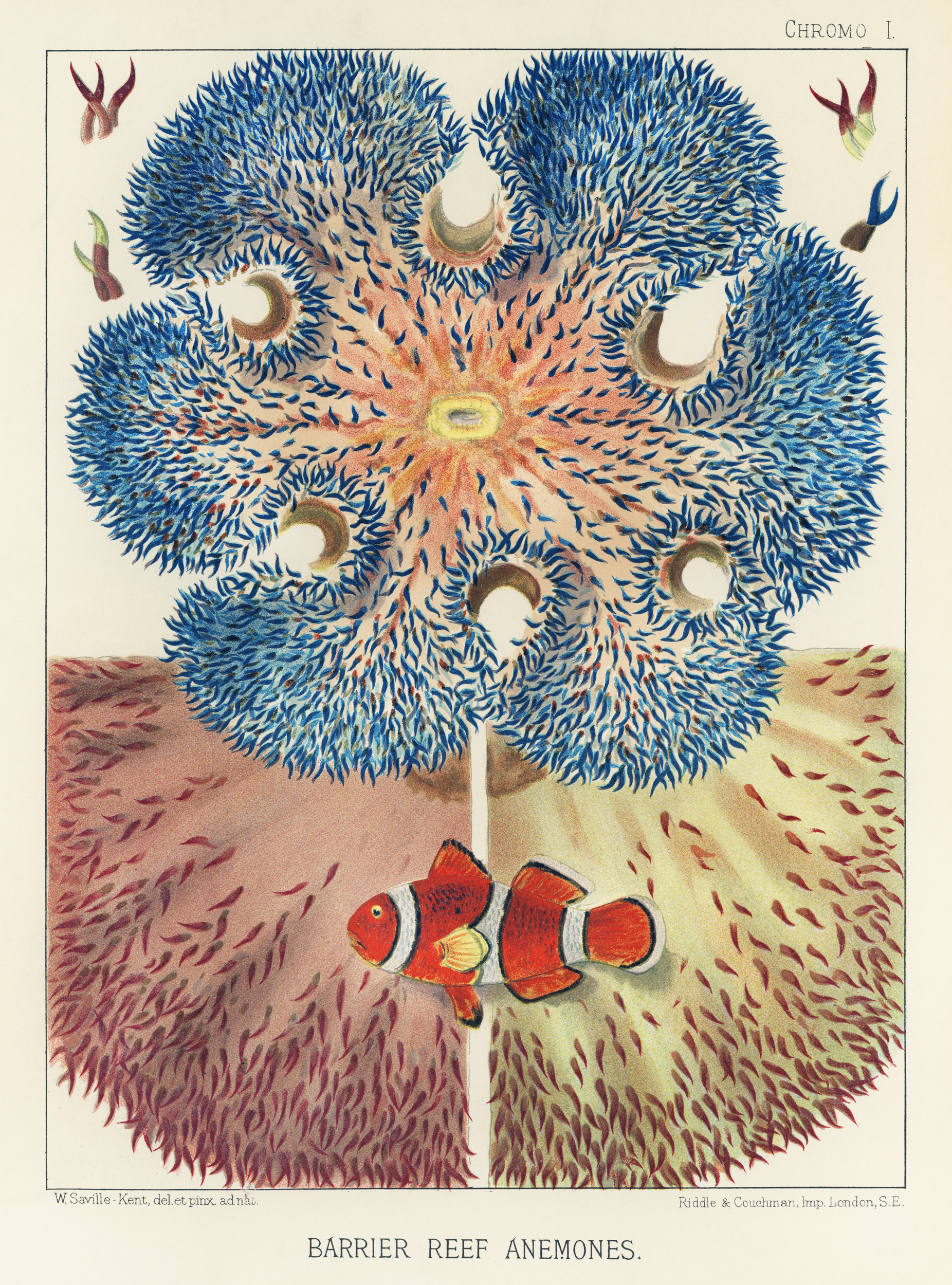
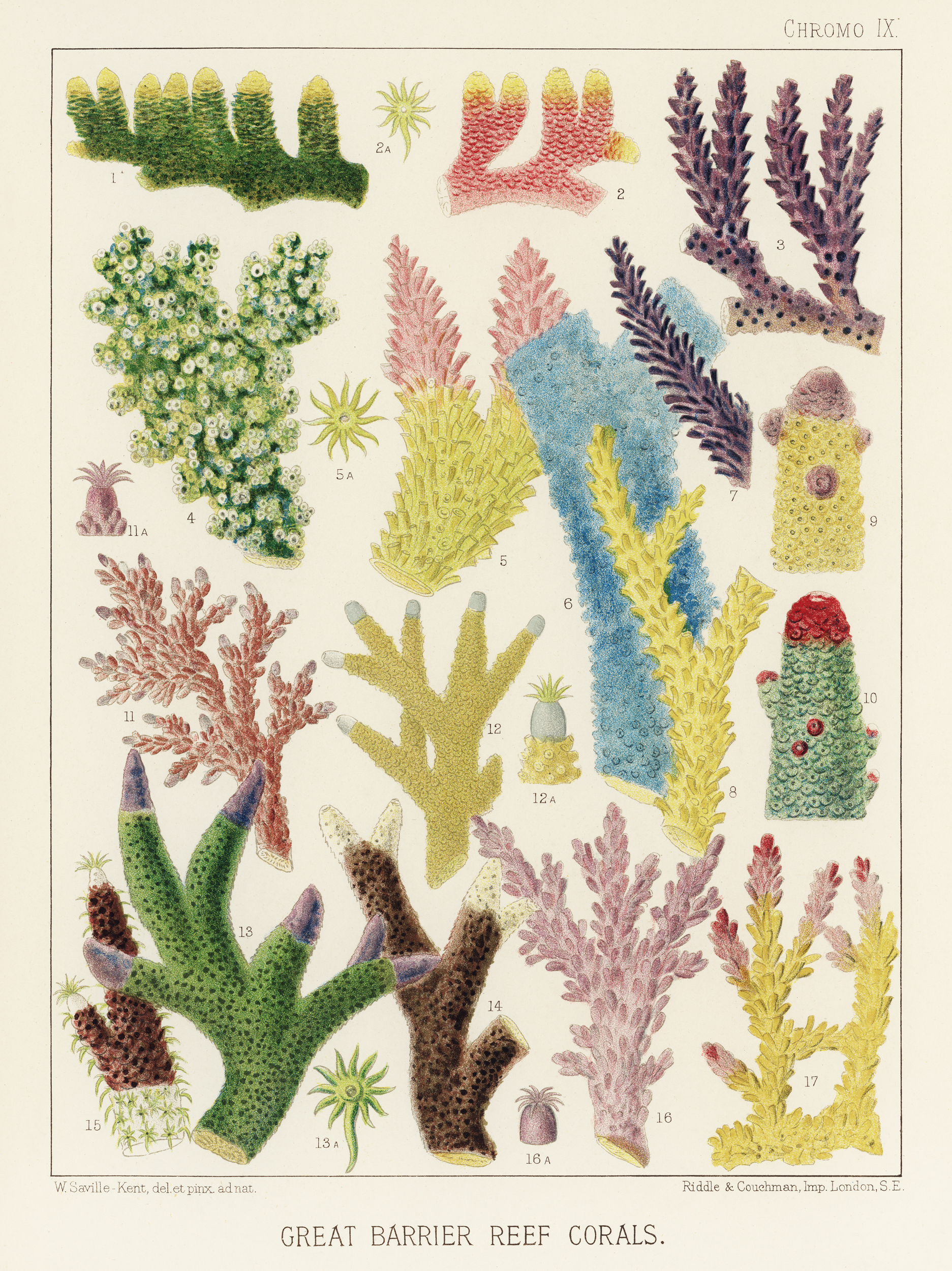
You can find more images in the Biodiversity Heritage Library here.
You can read more about the Great Barrier Reef here.
Turtles and Frogs
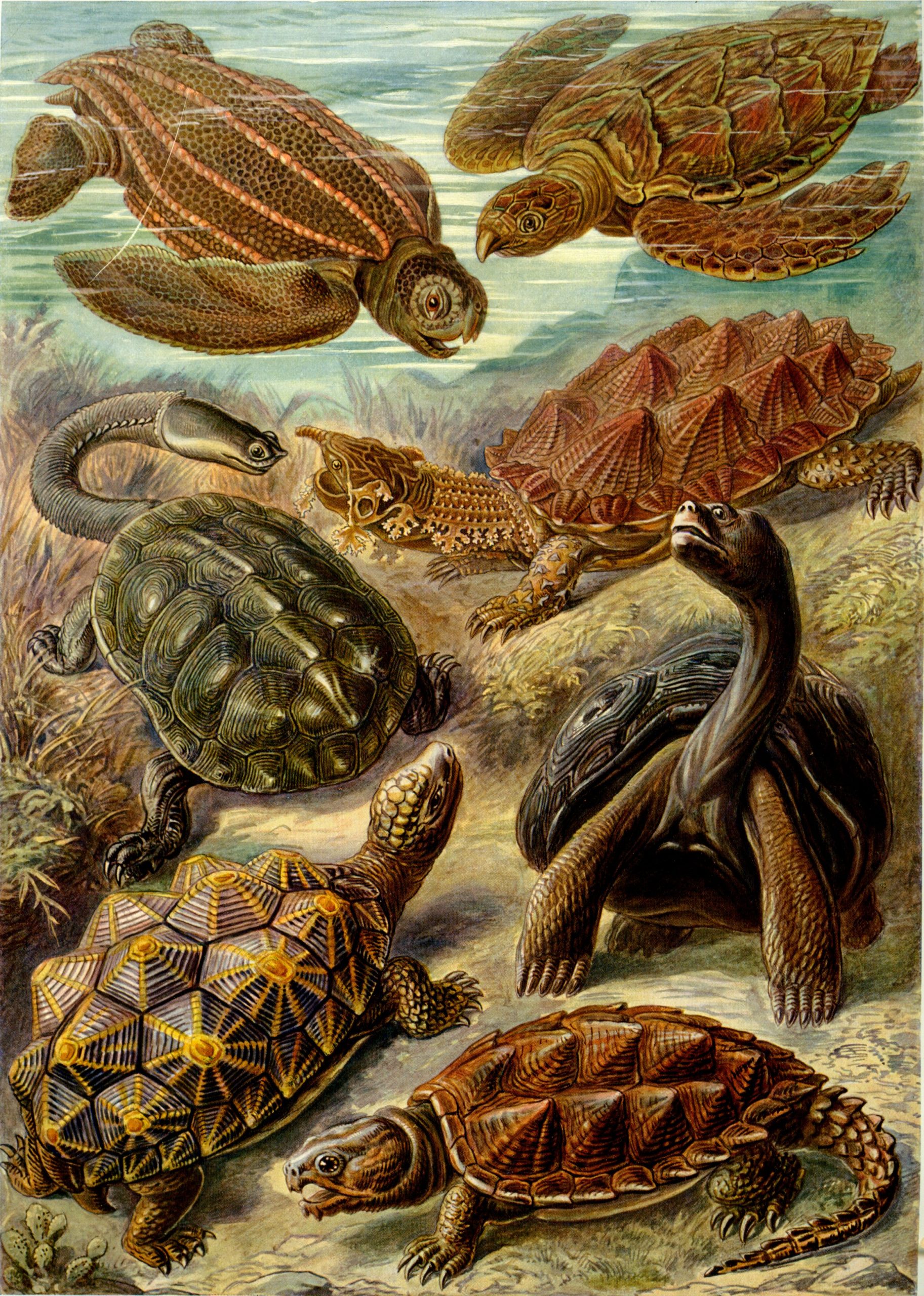
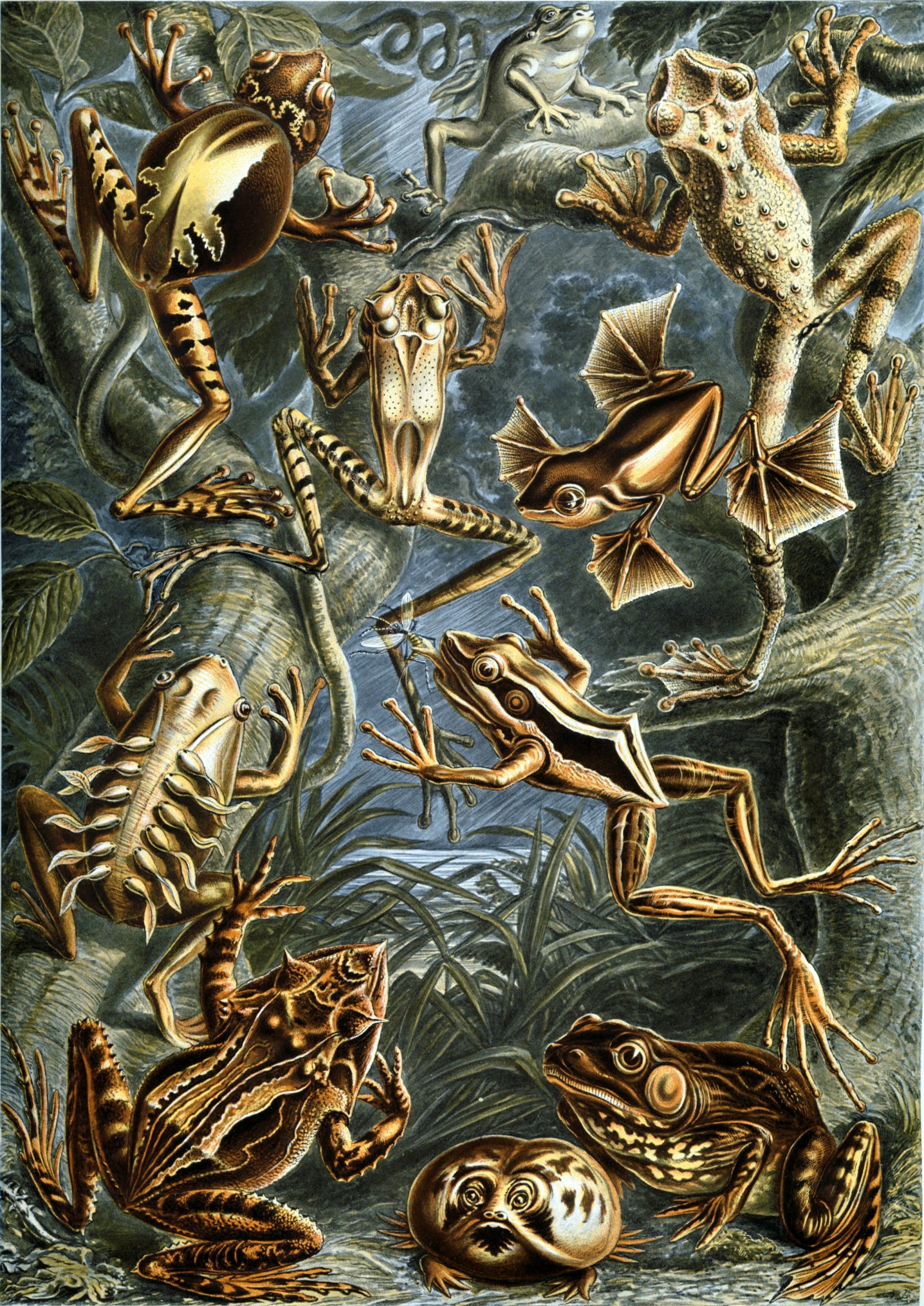
A Note on the Artist Ernst Haeckel (1834–1919)
“Ernst Heinrich Philipp August Haeckel (German: [ɛʁnst ˈhɛkl̩]; 16 February 1834 – 9 August 1919) was a German zoologist, naturalist, eugenicist, philosopher, physician, professor, marine biologist and artist. He discovered, described and named thousands of new species, mapped a genealogical tree relating all life forms and connected many terms in biology, including ecology, phylum, phylogeny, and Protista. Haeckel promoted and popularised Charles Darwin’s work in Germany and developed the influential but no longer widely held recapitulation theory (‘ontogeny recapitulates phylogeny’) claiming that an individual organism’s biological development, or ontogeny, parallels and summarises its species’ evolutionary development, or phylogeny.”
“Under the Surface” by Frances Ridley Havergal
I
On the surface, foam and roar,
Restless heave and passionate dash,
Shingle rattle along the shore,
Gathering boom and thundering crash.
Under the surface, soft green light,
A hush of peace and an endless calm,
Winds and waves, from a choral height,
Falling sweet as a far-off psalm.
On the surface, swell and swirl,
Tossing weed and drifting waif,
Broken spars that the mad waves whirl
Where wreck-watching rocks they chafe.
Under the surface, loveliest forms
Feathery fronds with crimson curls,
Treasure too deep for the raid of storms,
Delicate coral and hidden pearl.
II
On the surface, lilies white.
A painted skiff with a singing crew
Sky–reflections soft and bright,
Tremulous crimson, gold and blue.
Under the surface, life in death,
Slimy tangle and oozy moans,
Creeping things with watery breath,
Blackening roots and whitening bones.
On the surface, a shining reach,
A crystal couch for moonbeams’ rest,
Starry ripples along the beach,
Sunset songs from the breezy west.
Under the surface, glooms and fears,
Treacherous currents swift and strong,
Deafening rush in the drowning ears.
Have ye rightly read my song?
You can find the collected works of Frances Ridley Havergal here.
Threats to the Biodiversity of the Oceans
A collective effort is needed to reverse the damage done to marine ecosystems. . In Sea Sick: The Global Ocean in Crisis, Alanna Mitchell (2009) examines the ecological crisis of the planet, whether it be the impact of the coral reef bleaching, “dead zones” in the Gulf of Mexico, and the destruction of marine life via resource depletion through overfishing, the destruction of the whales and other marine mammals, the poisoning of the seas, and the lack of reverence for nature. Citing the work of marine biologist Jeremy Jackson, Mitchell describes the “brave new world” that can result from the mass extinction of life in the oceans. Unless profound ecological multifaceted changes are made in human behaviour, lifestyle, and consumption, a point of no return will result. She advocates for a “call for wisdom” as we work to find solutions to existing ocean crises. Our climate is controlled by the oceans, and the phytoplankton in the sea are “the true lungs of the planet” (Mitchell, 2009). Without plankton, “the food web of the ocean would collapse. All the larger creatures in the sea depend on plankton, either in their own food or as food for the creatures they like to eat” (p. 25). Mitchell writes:
So when I think of the planet, I think of it as a body with some serious health problems. The evidence is that the chemical levels of its ocean-blood are changing and that is affecting such things as pH, metabolism, fecundity, and ability to thrive. In a growing number of places, the very oxygen content of the ocean is trailing off. These are its vital organs, and they are telling us that that planet is in distress. The planet is slipping into biological and evolutionary unconsciousness. A point of no return. A switch …
That doesn’t mean that life will stop. It means that life as we know it will stop unless we can return the planet to health. But if we cannot, the components that provide the possibility of life in the future will still be here, sleeping and poised to spring back once a new system conducive to life emerges. (2009, p. 17)

